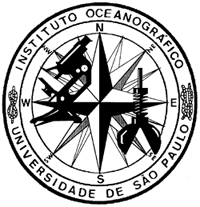Resumen
The results of a study on the feeding habits of L. olivacea and C. mydas agassizi from the Pacific coast, located at 19ºN and 105ºW, are presented. A preference for feeding on crustacea was observed on L. olivacea, proving to be essentially a carnivorous specie. In the case of C. m. agassizi a certain balance between algae and animal feeding was appreciated, beeing the plants in a greater volume and animals more diversified. Related to animal preying C m. agassizi bucal structure, seems to be adapted toward the retention of animals captured with algae. Apparently there is no competition for food between both species,, given that L. olivacea feeds on organisms from sandy bottoms, while C. m, agassizi feeds on arrecifal or rocky bottoms.
ARTIGOS
Contribución al conocimiento de los hábitos alimenticios de Lepidochelys olivacea y Chelonia mydas agassizi (Reptilia, Cheloniidae) en el Pacífico Mexicano
Gustavo Casas-Andreu; Samuel Gómez-Aguirre
Instituto de Biologia, Universidad Nacional Autónoma de México, México, D.F
SYNOPSIS
The results of a study on the feeding habits of L. olivacea and C. mydas agassizi from the Pacific coast, located at 19ºN and 105ºW, are presented. A preference for feeding on crustacea was observed on L. olivacea, proving to be essentially a carnivorous specie. In the case of C. m. agassizi a certain balance between algae and animal feeding was appreciated, beeing the plants in a greater volume and animals more diversified. Related to animal preying C m. agassizi bucal structure, seems to be adapted toward the retention of animals captured with algae. Apparently there is no competition for food between both species,, given that L. olivacea feeds on organisms from sandy bottoms, while C. m, agassizi feeds on arrecifal or rocky bottoms.
Texto completo disponível apenas em PDF.
Full text available only in PDF format.
- ABBOTT, I. A. & HOLLENBERG, G. J. 1976. Marine algae of California. Stanford, Stanford University Press, 827p., 699 figs.
- BUSTARD, R. 1972. Australian sea turtles, their natural history and conservation. London, Collins, 220p.
- CARR, A. F. 1952. Handbook of turtles. Ithaca, N. Y, Cornell University Press, 542p.
- ______ 1961. Pacific turtle problem. Nat. Hist., 70(8):64-71.
- ______ 1967. Caribbean green turtle: imperiled gift of the sea. Natn, geogra. Mag., 131:876-890.
- DAWSON, Y. E. 1952. Resumen de las investigaciones recientes sobre algas marinas de la costa pacífica de México, con una sinopsis de la literatura, sinonimia y distribución de las especies descritas. Revta Soc. mex. Hist, nat., 13(1/4):97-197.
- ______ 1956. How to know the seaweeds. Dubuque, Iowa, WM C. Brown, 197p., 259 figs.
- DERANIYAGALA, P. E. P. 1939. The tetrapod reptiles of Ceylon. Colombo Mus. nat. Hist. Ser., 1:1-412.
- DONOSO-BARROS, R. 1966. Reptiles de Chile. Santiago, Universidade de Chile, 458p.
- ERNST, C. H. & BARBOUR, R. W. 1972. Turtles of the United States. Kentucky, University Press, 347p.
- HIRTH, H. F. 1971. Synopsis of biological data on the green turtle Chelonia mydas (Linnaeus) 1958. FAO Fish. Synop., (85):pag. var.
- MÁRQUEZ M., R. 1976. Estado actual de la pesquería de tortugas marinas en México, 1974. Serie Infción, Inst. nac. Pesca México, (i46):1-27.
- ______; VILLANUEVA O., A. & PEÑAFLORES S., C. 1976. Sinópsis de datos biológicos sobre la tortuga golfina Lepidochelys olivacea (Eschscholtz, 1829) en México. Sinop. Pesca, Inst. nac. Pesca, México, (2):1-61.
- SMITH, G. M. 1944. Marine algae of the Monterrey, California. Stanford. Stanford University Press, 622p. 98láms.
- SMITH, H. M. 1961, Function of the choanal rakers of the green sea turtle. Herpetologica, 17(3):215.
- ZWINENBERG, A. J. 1976. The olive ridley, Levidochelys olivacea (Eschscholtz, 1829): probably the most numerous marine turtle today. Bull. Md her. Soc., 12(3):75-95.
Fechas de Publicación
-
Publicación en esta colección
06 Jun 2012 -
Fecha del número
1980

